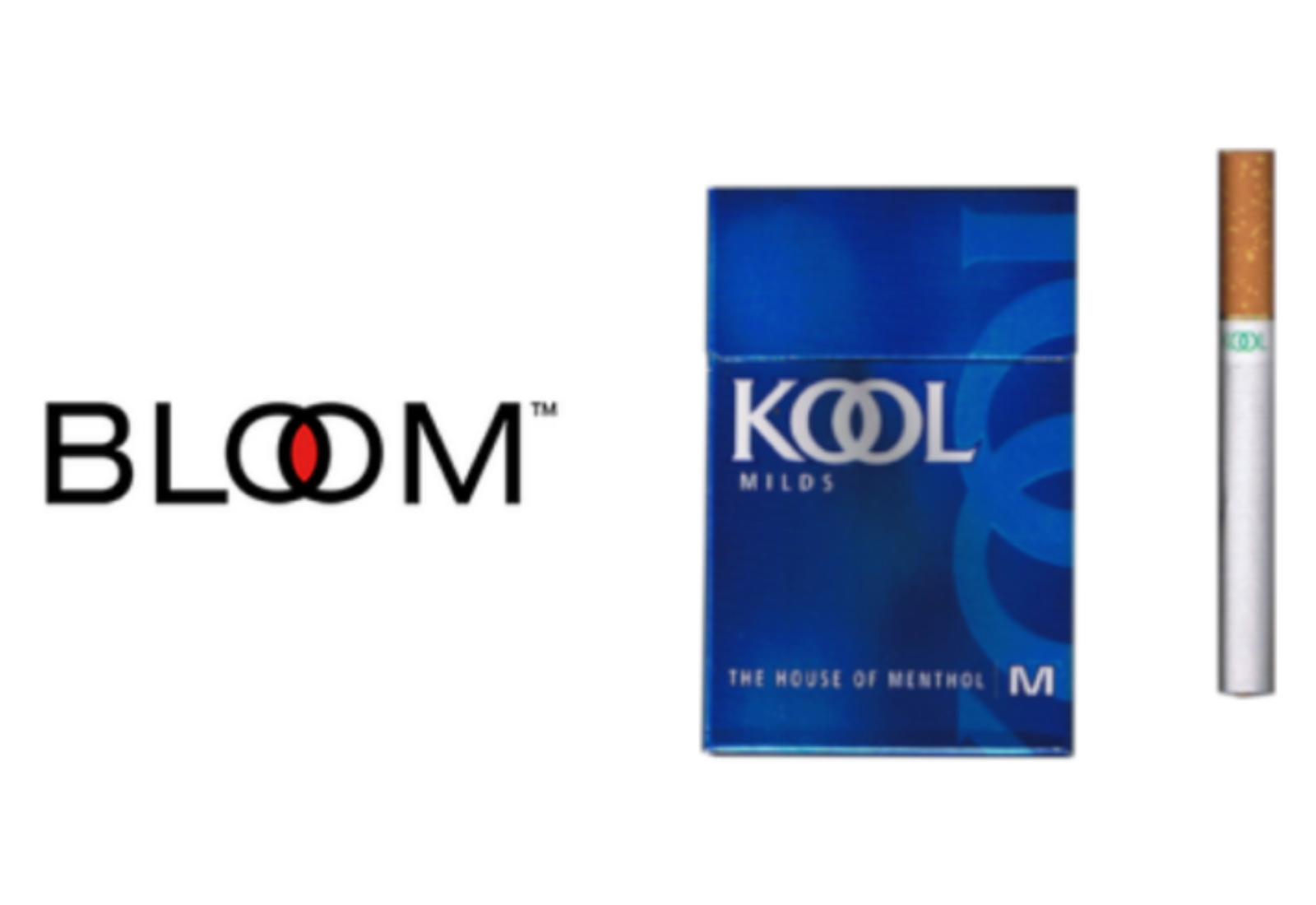
27 Jun Cannabis Trademark Litigation: A Trademark is the Sum of Its Parts

In a case we’ve been watching closely, a California District Court Judge recently denied a motion by cannabis company Capna Intellectual. The motion sought to dismiss tobacco giant ITG Brands’ dilution claim for its “KOOL” brand. ITG’s branding uses “KOOL OOs” while ITG’s branding uses “BLOOM OOs.”
As a refresher, in December 2020, ITG had sent Capna a cease and desist letter that “was expressly limited to [Capna’s] use of the interlocking ‘OO’s, which are central to the KOOL Marks, and not directed to [Capna’s] use of the mark BLOOM per se.” In other words, ITG took issue with the fact that both marks had the interlocking OOs. Capna didn’t engage, so ITG filed a lawsuit in January 2021. A couple months later, Capna moved to dismiss ITG’s third claim for trademark dilution.
To back up – trademark dilution refers to “the whittling away of the value of a trademark when it’s used to identify different products.” To prevail on a claim of trademark dilution, its owner must show:
- The mark is famous,
- The defendant is making a commercial use of a mark in commerce,
- The defendant’s use began after the mark became famous, and
- The defendant’s use of the mark is “likely to cause dilution by blurring or dilution by tarnishment of the famous mark, regardless of the presence or absence of actual or likely confusion, of competition, or of actual economic injury.” 15 U.S.C. § 1125(c)(1).
In its motion to dismiss, Capna argued that ITG’s KOOL OOs cannot be diluted because they’re not famous and because their mark was not sufficiently similar.
The Court didn’t hesitate to strike Capna’s first argument. For purposes of a dilution claim, “a mark is famous if it is widely recognized by the general consuming public of the United States as a designation of source of the goods or services of the mark’s owner.” 15 U.S.C. § 1125(c)(2)(A). In determining whether a mark is famous, courts “may consider all relevant factors,” including:
- The duration, extent, and geographic reach of advertising and publicity of the mark,
- The amount, volume, and geographic extent of sales of the goods or services offered under the mark,
- The extent of actual recognition of the mark, and
- Whether the mark was registered.
The Court reminded Capna that raising factual doubts was not sufficient to defeat ITG at the pleadings stage, and it gave deference to ITG’s representation that the KOOL OOs are famous.
In addressing Capna’s second argument that the KOOL OOs and BLOOM OOs are patently dissimilar, the Court reiterated:
‘Whether a defendant’s mark creates a likelihood of dilution is a factual question.’ … ‘Dilution by blurring’ is association arising from the similarity between a mark … and a famous mark that impairs the distinctiveness of the famous mark.’ ‘Dilution by tarnishment’ is association arising from the similarity between a mark … and a famous mark that harms the reputation of the famous mark.’
Capna argued that the words KOOL and BLOOM are entirely different words, and that ITGB uses green and blue packaging while Capna uses red packaging. The Court conceded Capna raised an interesting argument – that ITG was wrongfully conflating the “OOs” and the “KOOL OOs” to support their argument that Capna’s use of the “OOs” constituted trademark dilution. The Court conceded, “it may turn out that the KOOL Marks are famous while the KOOL OOs are not.” However, the Court ultimately disagreed:
Even though KOOL and BLOOM are obviously different words, and ITGB may use green and blue packaging while Capna uses red packaging, those elements do not provide the sole bases for ITGB’s claim. Rather, ITGB takes issue with Capna’s use of interlocking OOs within and alongside the name BLOOM, and with how similar the BLOOM OOs and KOOL OOs appear while being used in connection with related goods. As ITGB and Capna both sell smoking products, it is plausible that consumers might mistakenly believe that KOOL cigarettes and BLOOM cannabis products originate from the same source based on the shared use of nearly identical interlocking OOs in the middle of each brand’s respective logos. ‘A family of marks is a group of marks having a recognizable common characteristic, wherein the marks are composed and used in such a way that the public associates … the common characteristic of the family, with the trademark owner.’ Thus, ITGB adequately alleges a similarity between the KOOL Marks and the BLOOM Mark that is sufficient to maintain a claim for dilution.
Motions to dismiss are hard to defeat, but this opinion serves as a good reminder that you aren’t immune from trademark infringement and dilution claims just because there are certain differences in your marks. Be sure to consult with knowledgeable trademark attorneys to avoid lawsuits like these.


Sorry, the comment form is closed at this time.